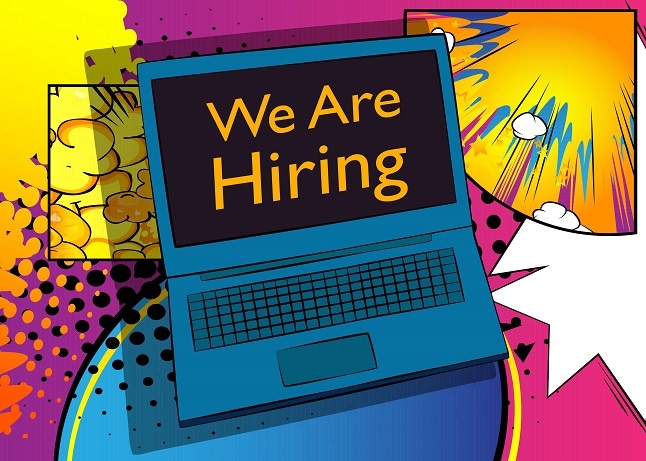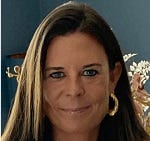Talent Science Teams and Other Secrets for Making Smart Hires
Identifying great hires is crucial for businesses today, so make talent acquisition a team science project.

As business tycoon Richard Branson said, “Success in business is all about people, people, and people. Whatever industry a company is in, its employees are its biggest competitive advantage.”
I couldn’t agree more. It’s the reason why the company I work for evolved its talent acquisition team into a talent science team at the start of 2023. As a globally remote company that receives tens of thousands of applications per month, we needed a better process to establish exactly which candidates would be the best fit for our business.
We have seen a 50% increase in our exceptional performers in the last year, experienced a 45% increase in hires made, and seen nearly three times more applications in 2022.
What’s allowed us to achieve these results? In a nutshell, we see hiring as a team effort and do things a bit differently.
First, we’re getting more people involved. As a company of over 1,000, we currently have close to 90 carefully selected hiring leaders working to select talent at any given time. It makes sense: These prospects may become a part of their team one day, so it’s critical to have them involved in the process from Day One. We trust our leaders to make these important decisions, but they don’t do so without support.
This is where our talent science team comes in: We support our hiring leadership cohort by looking deeply into the behaviors of potential candidates to predict their performance and success within the organization. We empower them to make the right hiring decisions with the help of proper assessment, as well as data that clues us in to important trends.
This strategy is working beautifully for us, but of course not every business has the resources (nor does it always make sense) to have a dedicated talent science team. However, every company can benefit if they abide by a few key principles to make better hiring decisions.
Stop Panic-Hiring
When organizations panic-hire, no one wins. It’s costly for the company in terms of time and budget, and it poses challenges for existing employees who have to pick up the slack. Most organizations build their hiring plans around strict timelines. For example, I’ve worked at companies in the past where, if a role wasn’t filled by the end of a quarter, that role would automatically close. This perpetuates a culture of hiring solely to fill a position versus finding the right person for the job.
Businesses must avoid this cycle. We do this by carefully managing which teams we want to grow and for what strategic reasons, as opposed to letting everybody submit requests for the roles they want filled. Taking a measured approach lets companies react more effectively to unexpected events (like an economic downturn) and means they’ll have less redundancies to contend with. Avoiding panic-hiring lets organizations bring on quality candidates who are more likely to adapt and thrive in the face of change, and even step into new focus areas.
Don’t Worry about What the Competition is Doing
As tempting as it may be, businesses need to avoid comparing their hiring process to that of their competitors. I often see companies reducing the length of their selection process to just a few weeks out of fear that an eligible applicant will get snapped up by a competitor. Another common mistake is prematurely making a candidate an offer just because they received an offer from another company. The thinking might be, “If my competitor wants this person, surely they’re qualified to work for us as well,” but businesses must always do their own work to truly assess a candidate’s suitability.
The truth is that every organization in the tech industry is different. We all have different cultures, ways of working, and problems to solve. An employee who is a stellar fit at one company may not be right for another, so companies need to focus on whether candidates have the attributes they need at their company. It’s also a good thing if a prospect shows some level of commitment to a specific brand: Other offers may be on the table, but ultimately they choose where they feel they best fit.
Leverage a Variety of Strategies to Assess Candidates
When assessing candidates, businesses need to gather several types of data on them via their application, in-person and written interviews, technical evaluations, psychometric tests, and more. The data is there to give companies a holistic view of prospects and whether they’re right for the organization, but no one data point should be a deciding factor.
We use a wide range of strategies to evaluate candidates in a way that is equitable. Different people have different strengths and weaknesses, and we need to account for things like cultural differences and language barriers in our hiring process. Someone might wow us during an in-person interview but then struggle with a written or technical assessment: That doesn’t necessarily mean they’re not a great candidate. It’s critical for businesses to not only gather information in a variety of ways, but also to judge it fairly. This can be accomplished by anonymous grading processes and having several people from different departments weigh in on a single candidate.
Whether or not a company has -- or plans to have -- a scientific approach to talent acquisition, every organization needs to be smarter about hiring. Budgets are tight for many, and we all know that quality talent can be hard to come by. By avoiding panic-hiring, not worrying about what the competition is doing, and implementing comprehensive assessment strategies, organizations can avoid common pitfalls and hire the right people the first time around.
About the Author(s)
You May Also Like
How to Amplify DevOps with DevSecOps
May 22, 2024Generative AI: Use Cases and Risks in 2024
May 29, 2024Smart Service Management
June 4, 2024







